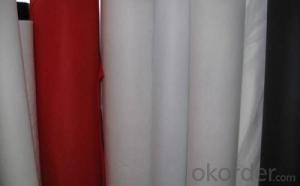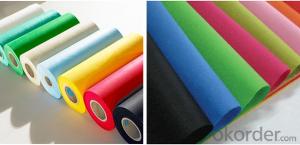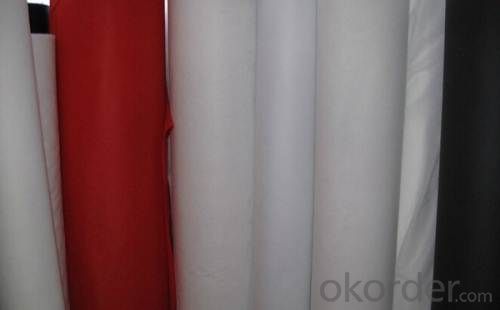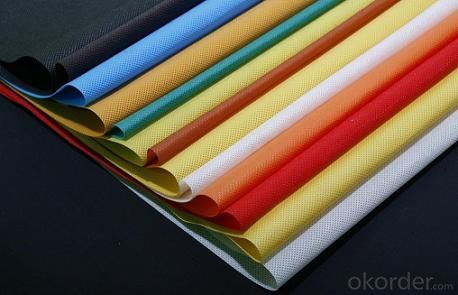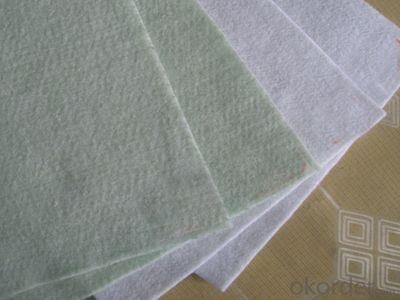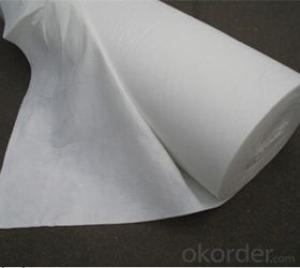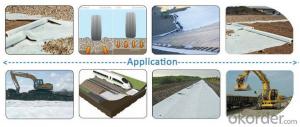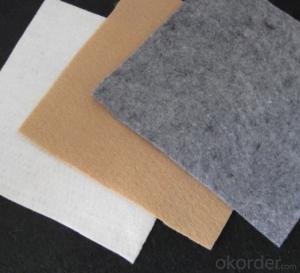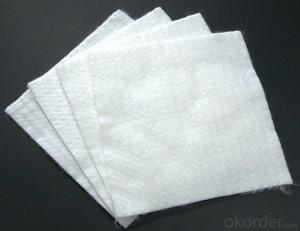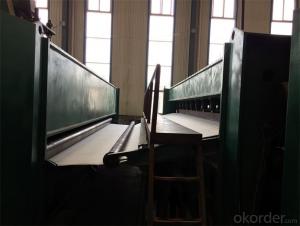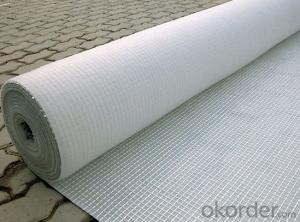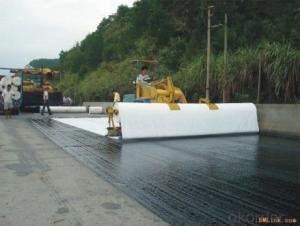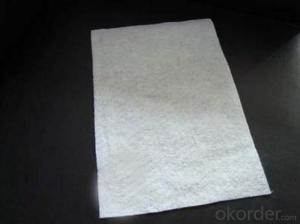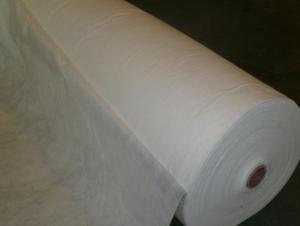Best, Low Price, Filament Geotextile, The Best Filament Spunbond Needle Punched Geotextile
- Loading Port:
- Tianjin
- Payment Terms:
- TT OR LC
- Min Order Qty:
- 2000 m²
- Supply Capability:
- 900000 m²/month
OKorder Service Pledge
OKorder Financial Service
You Might Also Like
Product Description
Geotextiles are permeable nonwoven fabrics used to separate,filter,reinforce, protect or drainage.Geotextiles allow filtration or separation of granular layers in roads and rail applications,used to protect membranes in landfill applications,used in coastal defence applications and used in landscaping to protect surfaces and structures from weeds and root growth.
Geotextiles are available as woven and non-woven .As liner protection, against physical damage, the non wovens are normally the answer.They are made up of fibers of polyester or polypropylene in random directions and punched together by needles during the manufacturing process.Geotextiles are commonly used to separate layers like clay and drainage and to protect liner from damage.
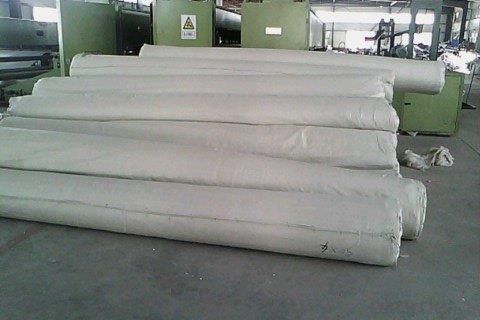
Product Details
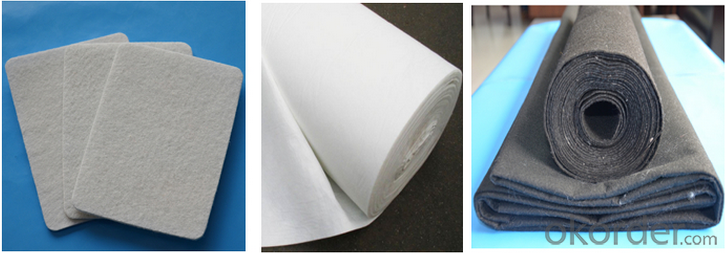
Features
Engineered to provide high strength and high elongation at break to ensure excellent resistance to damage during construction
Manufactured from high tenacity UV stabilised virgin polypropylene or polyester fibers which have been heavily drawn to ensure excellent long term durability in all soil types.
Manufactured using a randomly orientated web to provide completely isotropic properties,ensuring that high strength is not limited to a single direction.
Excellent uniformity with high permeability and low pore size for soil filtration.
Supplied to a maximum width of 8.0 meters,ensuring minimum waste over large construction areas.
100% polypropylene or polyester staple fibers ,needle punched and random network formation.
UV and rot resistant and biological degradation resistant.
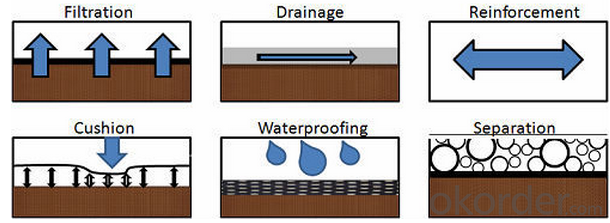
Majority Process

Specific Data
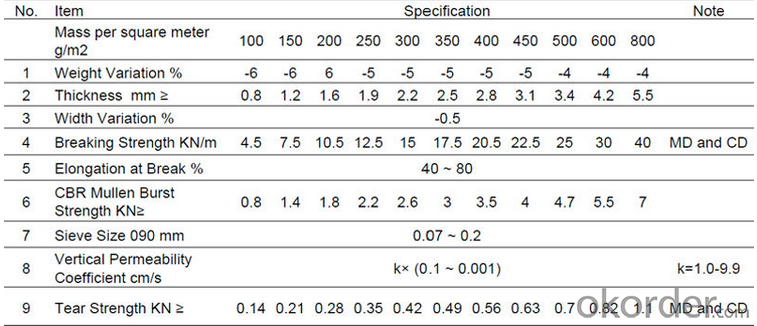
FAQ
Q: What kind of payments does jenor support?
A: T/T, L/C, Cash are accepted.
Q: Do you charge for the samples?
A: Accordeing to our company policy, the samples are freee, we only charge the freight fee. And we will return the freight fee during the next order.
Q: Can you produce according to customers' design?
A: Sure, we are professional manufacturer, OEM and ODM are both welcome.
Q: Do you have other products?
A: Yes, please contact us without hesitate
- Q: What is the difference between nonwovens and geotextiles? What is the difference between geotextiles and nonwovens?
- Geotextile is divided into two non-woven geotextile and woven geotextile, non-woven geotextile and acupuncture and spunlace, staple fiber and long fiber. Nonwovens means that the manufacturing process does not require weaving. Geotextiles are used for geotechnical engineering. Geotextile is part of the textile does not require the manufacture can be made, called non-woven geotextile. Non-woven fabrics can be used very broad, like we use the heart of the soft wipes, are non-woven, as well as the hotel put the shoes of the shoes, but also non-woven.
- Q: How do geotextiles help with vegetation establishment in landscaping projects?
- Geotextiles help with vegetation establishment in landscaping projects by providing a stable and supportive environment for plant growth. They act as a barrier, preventing erosion and soil movement, while allowing water and nutrients to pass through to the plants' root systems. Geotextiles also aid in weed suppression, creating a favorable condition for the establishment and growth of desired vegetation.
- Q: How do geotextiles improve the performance of asphalt overlays?
- Geotextiles improve the performance of asphalt overlays by providing a separation layer between the existing pavement and the new overlay. This helps to prevent the mixing of materials and the migration of fines, which can lead to premature pavement distress. Geotextiles also enhance the structural integrity of the overlay by distributing loads and reducing stress concentrations, thus increasing the overall lifespan and durability of the pavement.
- Q: What is the effect of highway geotextile on highway construction?
- Highway geotextile is a new type of civilized artifacts in the construction of the time, laying highway geotextile can improve the carrying capacity of the road, can improve the use of the road in the process of structural damage. As the geotextile has the role of shock absorption, and has a high elasticity and resistance to deformation, so you can make the road to bear the load and stress more uniform. In the project using Hongxiang new geotextile can also improve the rigidity of the road, help to reduce road cracks.
- Q: How do geotextiles help in preventing the loss of aggregate in unpaved roads?
- Geotextiles are used in unpaved roads to prevent the loss of aggregate by providing stabilization and reinforcement. When placed between the soil and aggregate layers, geotextiles act as a barrier that allows water to pass through while retaining the aggregate, effectively preventing erosion and maintaining the road's integrity.
- Q: How do geotextiles help in preventing soil compaction?
- Geotextiles help in preventing soil compaction by providing a barrier between the soil and external forces. They distribute the load evenly across the surface, reducing direct pressure on the soil and preventing it from being compacted. Additionally, geotextiles improve soil drainage, allowing excess water to flow through and preventing waterlogged conditions that can lead to compaction.
- Q: How do geotextiles help with soil erosion on slopes?
- Geotextiles help with soil erosion on slopes by acting as a protective barrier between the soil and the forces that cause erosion. They stabilize the soil, prevent its displacement, and enhance its strength. Geotextiles also promote water filtration and drainage, reducing the risk of water-induced erosion.
- Q: Are geotextiles suitable for use in canal lining?
- Yes, geotextiles are suitable for use in canal lining. They offer excellent filtration, erosion control, and separation capabilities, preventing soil erosion and enhancing the stability and longevity of the canal lining. Additionally, geotextiles can help with water drainage and resist degradation from exposure to UV rays and chemicals commonly found in canal environments.
- Q: What are the factors to consider when selecting geotextiles?
- When selecting geotextiles, there are several factors that should be considered. These include the intended application or project, the required strength and durability, the desired permeability and filtration properties, the site conditions and environmental factors, as well as the cost and availability of the geotextiles. It is important to choose a geotextile that is suitable for the specific requirements of the project and can effectively perform its intended function.
Send your message to us
Best, Low Price, Filament Geotextile, The Best Filament Spunbond Needle Punched Geotextile
- Loading Port:
- Tianjin
- Payment Terms:
- TT OR LC
- Min Order Qty:
- 2000 m²
- Supply Capability:
- 900000 m²/month
OKorder Service Pledge
OKorder Financial Service
Similar products
Hot products
Hot Searches
Related keywords

